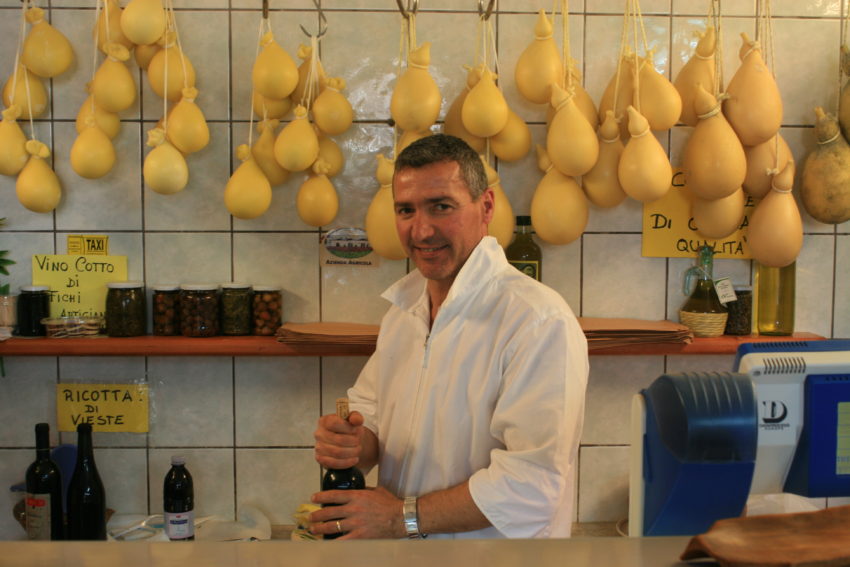Puglia journal: Vieste a romantic hideaway on the spur of Italy’s heel

Sometimes in travel you find yourself in such an idyllic place that you think you’re the only person in the world this happy. This is one of those times.
I’m on the rooftop of Rocca Sul Mare, my hotel here high above the Adriatic Sea. The rooftop is barebones, just four random small wooden tables and chairs in an area that could hold the passengers of a small cruise ship. But this is the low season and I have this spot – and view – all to myself.
I’m staring out at a lighthouse, perched atop a long, nearly barren rock with the blue sky providing the backdrop. To the left are the whitewashed buildings of Vieste. They aren’t the blinding bright white of Santorini but the rougher edge gives it more of a seafaring look. The seven-story apartment house has all the air-conditioners exposed and radio antennas and satellite dishes sit atop some of the buildings. But so do big orange planters and red-tiled roofs.
Vieste is like many 2,000-year-old Italian towns. It’s a network of narrow, windy, hilly alleys barely enough for two people to pass without rubbing elbows. You walk past tiny trattorias and enotecas and people’s stoops where the locals gather to gossip and children kick soccer balls against the walls. But Vieste is on the edge of Gargano National Park, on outcropping that sticks out into the Adriatic like a small spur. Taking the bus into town, we passed a spectacular gold-sand beach set against the backdrop of a towering rock formation, Scoglio di Pizzomunno. And the beach was empty as were every restaurant that served.
I’m here right before the mad tourist rush which, from what I’ve read and gathered from Romans, is insane here in the summer. It’s like Coney Island in the ‘50s. But here in early May I could see having the beach to myself. And what do you know? The sun is out and if that cool breeze warms today will be a day at the beach one dreams about while fighting fatigue at a desk at 3 in the afternoon.
This hotel is fabulous. It has a dirty, whitewashed look to the outside. That figures. The building is 1,000 years old. It used to be a monastery. It still has the original, carved, wooden front door and arches. The chapel, with its bell tower, is sticking up right behind me. The dining room is lined by a deck where you can eat outside and look out at the sea. There’s free Internet, AC and heat and a hot shower. The place just reeks of romance. I checked in right behind a young Swedish woman who looked five months pregnant. Romance works pretty fast here.
The lovely thing about Italy is it isn’t just one country. It’s a collection of 20 regions, each with its own history, dialect and cuisine. They used to be 20 city states since the fall of the Roman Empire. The locals have stuck to their customs, particularly about food. Pugliese cuisine is punctuated with orchiette, the ear-shaped pasta that keeps falling off your fork. Pugliese bread is real crunchy, a rock-hard crust surrounding cushiony soft dough. They take old bread, grind it up and sprinkle it on everything.
I stumbled down a narrow alley to a little place called Osteria a Duomo. It’s right below the cathedral that dominates the town’s landscape. Osteria a Duomo couldn’t be more romantic if you ate in a four-poster bed. It’s in a 400-year-old building that’s literally a stone cave. The arched roof is only about nine feet high. With the white candles, you feel like you’re in hiding. But with all the wine racks around you at least won’t go thirsty.
I had a classic Pugliese dish: orchiette with squid and broccoli leaves sprinkled with bread crumbs, called strascinati. Each piece of orchiette was covered in crunchy breadcrumbs which added a hearty texture not to mention a tangier taste. The pasta was buttery and the squid wasn’t chewy. That followed a seafood salad consisting of big, fat chunks of octopus in Pugliese olive oil and sprinkled with parsley. Topped with three glasses of $3 Negro Mauro wine, it was one of the best meals I’ve ever had in Italy.
Deborah, an American friend in Fiumicino, the town where Rome’s airport sits, said I should consider living in Puglia. I don’t know. Those narrow alleys would cave in on me after a while. But I’m definitely living it up this week.

